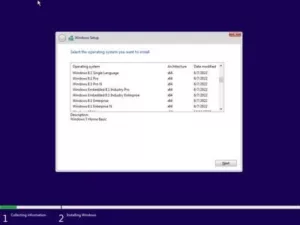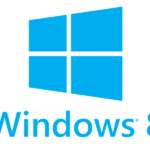Microsoft Windows 8.1 PRO editions
Microsoft Windows 8.1 Enterprise editions
Microsoft Windows 8.1 All-in-One Editions
Review of Windows 8.1
Windows 8.1 FAQ
What is Windows 8.1?
Windows 8.1 is an operating system that Microsoft in 2013 as an update to Windows 8. It includes new features and enhancements. such as the return of the Start button and improved search functionality.
What are the system requirements for Windows 8.1?
The least system requirements for Windows 8.1 are a 1 GHz processor. 1 GB of RAM for the 32-bit version or 2 GB for the 64-bit version. and 16 GB of available hard disk space for the 32-bit version or 20 GB for the 64-bit version. But, Microsoft recommends using a faster processor, more RAM. and a larger hard drive for optimal performance.
How do I upgrade to Windows 8.1?
If you are currently using Windows 8, you can upgrade to Windows 8.1 for free through the Windows Store. If you are using an older version of Windows, you will need to buy a copy of Windows 8.1 and install it.
What are the differences between the different editions of Windows 8.1?
There are several different editions of Windows 8.1, including Home, Professional. and Enterprise. The Home edition for home users. while the Professional edition includes more features for business and professional users. The Enterprise edition is the most comprehensive version of Windows 8.1. and includes advanced tools and features for managing and securing enterprise networks.
Is Windows 8.1 still supported by Microsoft?
No, mainstream support for Windows 8.1 ended on January 9, 2018. But, Microsoft still provides extended support for Windows 8.1 until January 10, 2023. which includes security updates and bug fixes.

Best Features of Windows 8.1
-
Start Button: One of the most significant improvements. over Windows 8 was the return of the Start button. It made it easier for users to navigate the operating system. and access their programs and settings.
-
Improved Search: Windows 8.1 has enhanced search functionality that integrates with Bing. allowing users to find what they need on the web and on their computers.
-
Boot to Desktop: Users can now boot to the desktop. bypassing the Start screen, and making. it easier to access their desktop applications and files.
-
Enhanced Snap View: Snap View allows users to multitask by snapping many applications. side-by-side on the screen. In Windows 8.1. users can now resize the snapped windows, allowing for more flexible multitasking.
-
SkyDrive Integration: Windows 8.1 integrates with Microsoft’s cloud storage service. SkyDrive, allows users to access their files and settings from anywhere.
-
OneDrive Integration: Besides SkyDrive integration. Windows 8.1 also integrates with OneDrive. Microsoft’s cloud-based file storage and sharing service.
-
Improved Security: Windows 8.1 includes several security enhancements, such as Windows Defender. which provides real-time protection against viruses, malware, and spyware.
-
Remote Desktop: Windows 8.1 Professional and Enterprise editions include Remote Desktop. which allows users to access their desktops and applications. from anywhere using a remote connection.
Technical Details & System Requirements
Technical Details:
- Developer: Microsoft
- Initial release: October 17, 2013
- Latest release: Update 3 (KB4577051), released on November 10, 2020
- Platform: x86-64
- Kernel type: Hybrid (Windows NT kernel)
- License: Proprietary commercial software
System Requirements:
- Processor: 1 GHz or faster with support for PAE, NX, and SSE2
- RAM: 1 GB for 32-bit or 2 GB for 64-bit
- Hard disk space: 16 GB for 32-bit or 20 GB for 64-bit
- Graphics card: Microsoft DirectX 9 graphics device with WDDM driver
- Display: 800 x 600 resolution or higher

